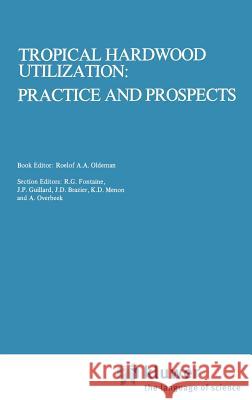Tropical Hardwood Utilization: Practice and Prospects » książka
Tropical Hardwood Utilization: Practice and Prospects
ISBN-13: 9789024725816 / Angielski / Twarda / 1982 / 584 str.
Roelof A. A. Oldeman Tropical hardwoods are one of the essential cogs in the complex socio-economic machinery keeping alive an ever-increasing humanity with steadily rising claims upon a finite-resource environment. Their position in this context at first sight seems to be analogous to that of other commodities, such as rubber, metals, mineral oil, tropical fruits and many more. Looking closer, however, tropical hardwoods occupy a special place. Their vast majority, unlike tropical crops, still comes forth from natural forests being exploited by man. This exploitation straight from the natural resource is something they have in common with oil and metals, but the fact that they grow in living systems places them closer to crops. Natural forest ecosystems are not renewable. Timber producing trees, however, can be made into a renewable resource on condition that ways and means are found to cultivate them as a crop. be understood as a socio-economic The tropical hardwood situation can best chain, with the resource base at one end, the consumer community at the other and everything that has to do with the market in the middle. Now, at the resource side, the economics of tropical hardwood extraction barely got out of the primeval ways of wood-gathering by hand and by axe, which were still predominant in the nineteen-forties. There, the offer of natural products was so immense and so near to hand that no care had to be taken of the resource.











